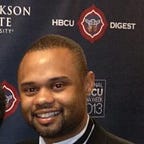That One Time When the Magic City Classic Made More Than Alabama Crimson Tide Football
What’s a few hundred thousand to a football crazy state making millions?
Birmingham City Council members earlier this week approved a $675,000 civic payout to organizers of the Magic City Classic, one of the nation’s largest black college football games and a financial windfall for the city and two teams playing in it, Alabama State University and Alabama A&M University.
Some elected officials had questions about where the money was going. From AL.com:
“We just need to know the whole enchilada,” said Councilor Valerie Abbott, who voted against the motion. “What money are the taxpayers spending? Because it is not our money. We fritter it away like it is, but it is not.
“I wanted to see a breakdown of all money that’s being spent on the Classic regardless of the source, and what we are spending it on and what we are projecting to spend it on,” she said.
That’s a completely legitimate question for elected officials to ask. Except, it doesn’t jive with how the rest of the state does business with colleges when it comes to college football.
The City of Tuscaloosa spends about $500,000 annually on overtime and double-time for city police officers to staff football games at the University of Alabama.
That’s a small investment for the nation’s top college football program, which according to most estimates, brings about $18.5 million to the city and region during every Crimson Tide home game.
But look at similar estimates for the Magic City Classic.
According to the Greater Birmingham Convention and Visitors Bureau, the 2015 Magic City Classic had 50,000 attendees and an economic impact of $18.6 million.
It’s heartbreaking and uplifting and the same time; a profound statement about the disparity between historically black and predominantly white public institutions and the sports we play, but also a glimpse into the potential of black buying power throughout the south, and perhaps, nationwide.
One of our biggest football classics brings in about $100,000 more than an average home game of the nation’s best team. That says a lot about how many people of many races travel to and spend money on Alabama football, versus how much a nearly exclusive African American fan base invests in the sport.
But it also shows what is possible for certain schools in football crazy regions. Six out of 10 SWAC member schools play in areas where there is no professional football, and while they are competing for fans against the SEC, there is room for an affordable, entertaining football brand produced by historically black colleges.
HBCU bands are better, the game day experience is more family-friendly without alcohol on sell in college stadiums, and the ticket prices are far more affordable to students and fans than prices posted by comparable Division I programs.
Two lessons are clear from the numbers. First, elected officials need not question how $600k gets spent in the effort to make $18m. And second, more HBCU fans need to get involved in the economic ecosystem of sports, if we ever hope for more than one or two big games a year, and to avoid the inevitable move to Division II when the federal government shuts down a few dozen HBCUs in the next 10 years.
